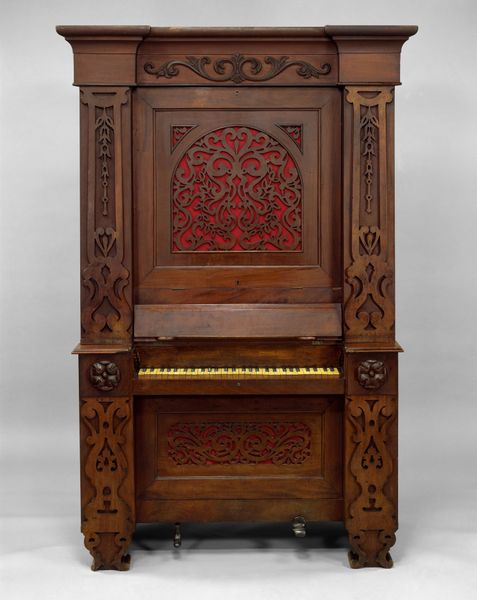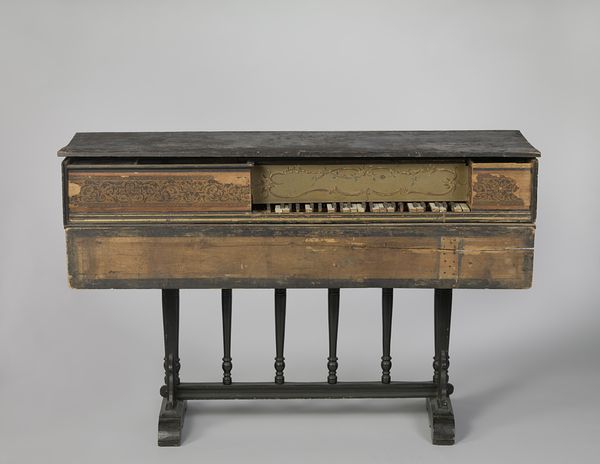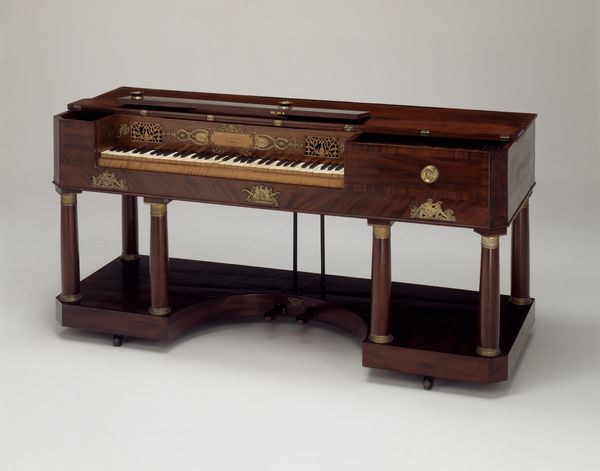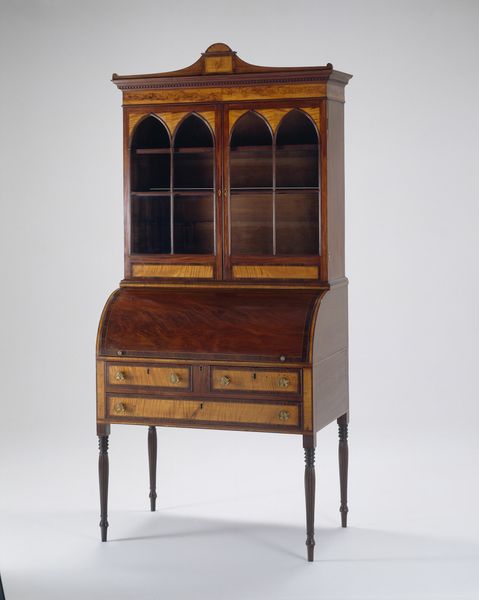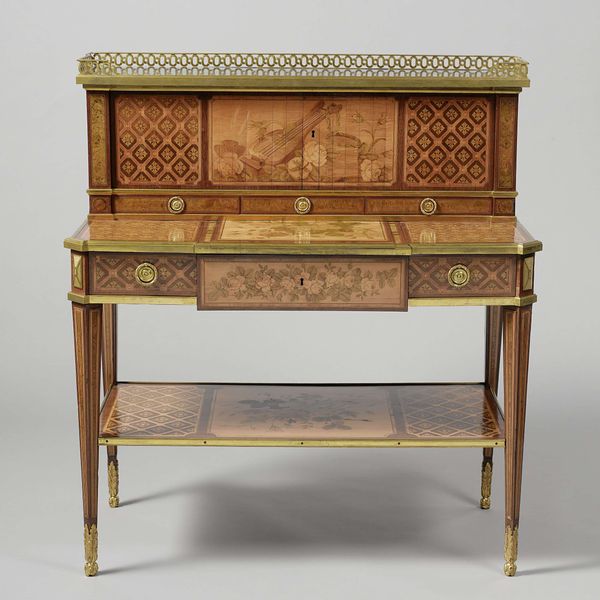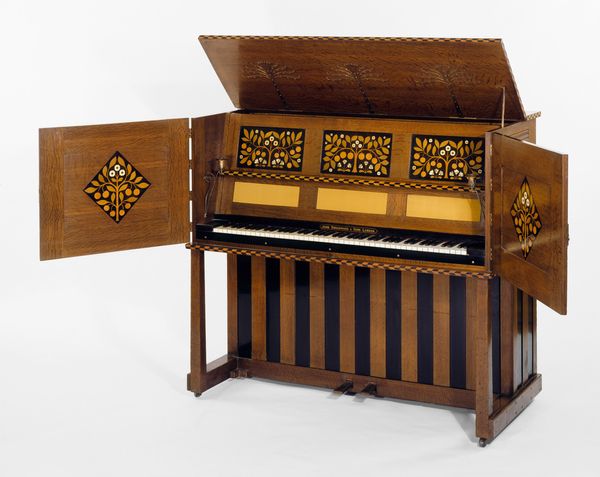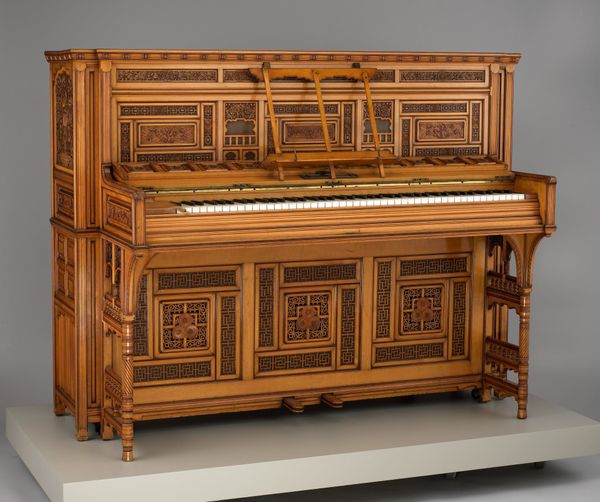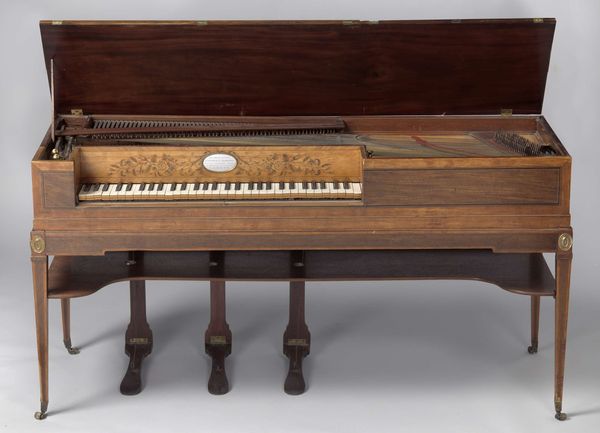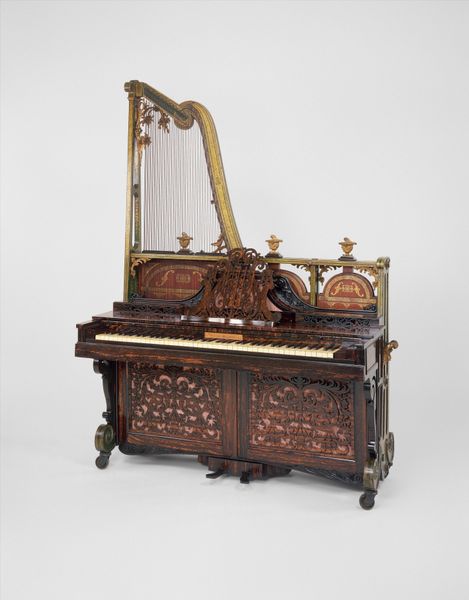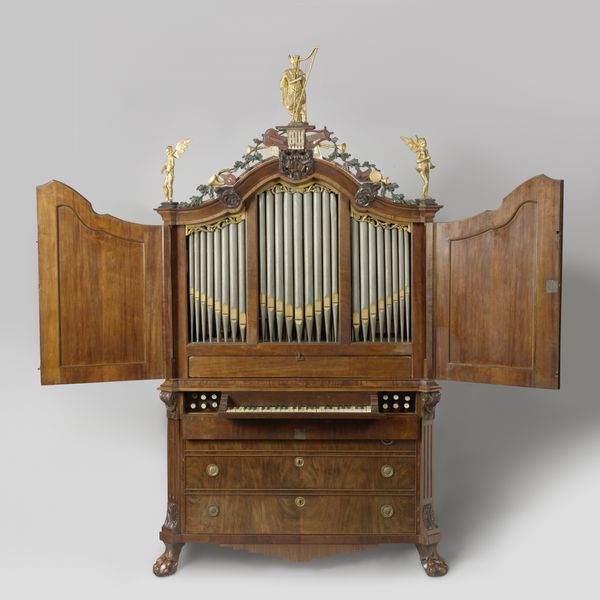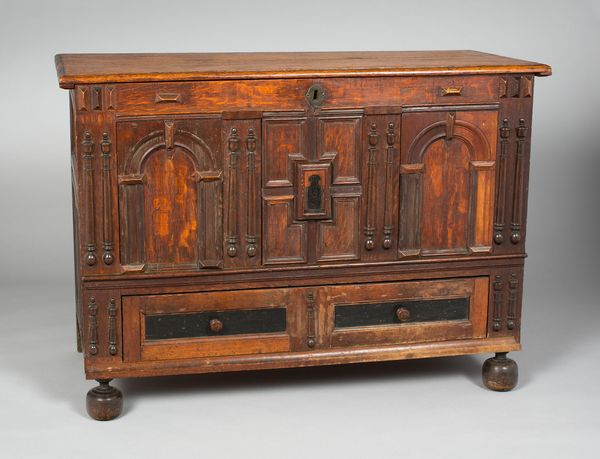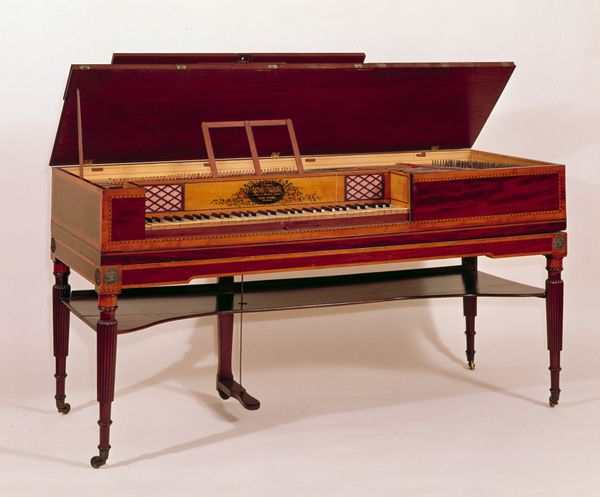
wood
#
sculpture
#
11_renaissance
#
wood
#
musical-instrument
Dimensions: Instr. 74cm x 56cm x 61cm Stand: 78cm x 62cm x 100cm
Copyright: Public Domain
Curator: Standing before us is the Claviorganum, a remarkable creation by Lorenz Hauslaib, dating back to 1598. It's currently housed here at the Metropolitan Museum of Art. Editor: It strikes me immediately as quite architectural, a miniature cabinet of secrets, and I’m getting an odd sense of anticipation from the symmetrical facades facing me, but why anticipation, exactly? Curator: It merges two instruments in one; both an organ and a harpsichord. This dual function would allow for a rich palette of sonic textures and possibilities during the late Renaissance period, with all its spiritual symbolism. Editor: The visible mechanics give it a strong, visual rhythm, especially in relation to those contrasting dark hues. All those rectilinear drawers set a beat which makes one notice all the other aspects of visual interest such as that prominent, ornate, golden panel set just above the keyboard. Curator: Yes, exactly. And more than just aesthetic decoration. Embedded images could act as mnemonics or memory aids, subtly imprinting religious or cultural knowledge into the experience of playing or hearing music. A silent chorus accompanying the sound, guiding devotion, or upholding aristocratic values. Editor: Thinking about this piece from the point of view of materiality, I have to believe that working in wood gives it a certain weight, gravity in essence. Did that serve a cultural purpose at all in this instance? Curator: Wood offers earthly resonance, a symbolic foundation mirroring that of the building structure itself—think of music as a form of divine engineering. Imagine what harmonies echoed forth to reflect not just musical preferences but a hierarchical image of cosmic perfection and dynastic power. Editor: The details of color composition certainly stand out. A stark interplay between a range of browns, yellows, and near blacks, creates a deep contrast that is undeniably eye-catching, giving it a sense of importance and solidity. A complete sensory experience is evident here in this design. Curator: Well said. Ultimately, a single chord from this instrument held social and cultural complexity capable of tuning perception through all the levels of lived Renaissance reality. Editor: Indeed. It’s an amazing example of art providing functional, multisensory experience.
Comments
No comments
Be the first to comment and join the conversation on the ultimate creative platform.

